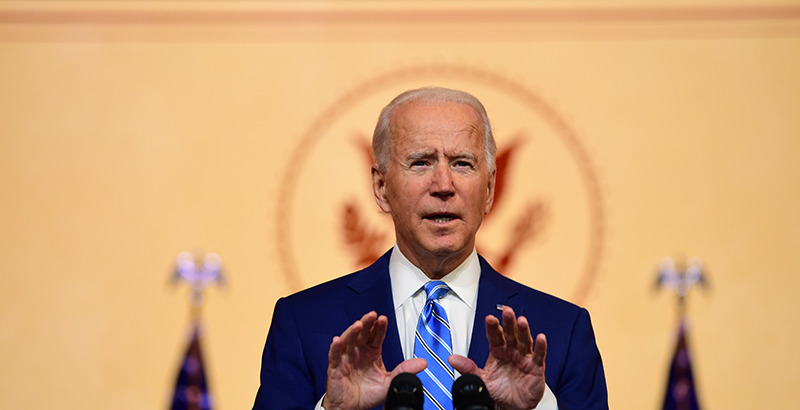Analysis: In 2008, the NEA Demanded a Limited Federal Role in Education. Its Policy Wish List for 2021 Is Very Different

Mike Antonucci’s Union Report appears most Wednesdays; see the full archive.
Soon after Election Day, the National Education Association released its “Policy Playbook” for the incoming Biden administration. It caused a stir among conservative news outlets for its extensive list of recommendations, including:
- Suspend federal academic testing requirements until after the COVID-19 crisis has passed.
- Oppose all charter school expansion that undermines traditional public schools.
- Oppose charter schools that operate entirely online.
- Cancel the student loan debts of experienced educators.
- Reach an agreement with Congress on at least $175 billion in additional federal emergency aid to stabilize public education funding.
- Quadruple the federal investment in Title I.
- Institute a nationwide mask mandate and condition COVID-19 relief funding on implementation of effective mitigation strategies.
- Pack the federal courts.
- Strengthen Social Security by eliminating the cap on maximum taxable earnings, but oppose mandatory coverage of public employees under Social Security for employee groups that have declined coverage.
- Oppose “arbitrary maximum limits on any state or local government’s ability to spend or tax.”
- Condition federal education funding on state and local laws or policies permitting collective bargaining.
Issuing recommendations was nothing new for NEA. It did so the last time a Democrat was elected to the White House, in 2008. The union’s main demand then was that the Obama administration “endorse inclusion of the principles of NEA’s Great Public Schools for Every Student By 2020.”
But that NEA policy playbook, issued in July 2008, had quite a different take on the federal government’s role in public education. Back then, the union was focused on dismantling the No Child Left Behind Act, and it sounded like the staunchest advocate of the 10th Amendment.
“NCLB radically altered and expanded the role of the federal government, making it far more
intrusive than it had ever been,” the report stated. “This in turn threw a wrench into education reform efforts in the states.”
The union reiterated its support for a limited role for the federal government in education several times.
- “Schools, districts and states — not the federal government — are the primary engines of public school transformation. Most of the leadership and responsibility for education appropriately rests at the state and local school district levels. Constitutionally, education is reserved to the states, and the majority of education funding is provided at the state level. The federal role, therefore, should act as leverage to support and accelerate transformation in the states.”
- “The federal government should embrace its role as a supporter — not a micromanager — of state and district responsibilities.”
- “The federal role should be to provide necessary resources, collect and report data, and monitor state efforts to ensure that states carry out plans to close achievement gaps and eliminate disparities.”
- “The federal government should not micromanage local and state decisions on teacher compensation and evaluation, which are best left to local, collaborative decision making such as collective bargaining.”
- “Reform begins and ends in the school and the classroom.”
The NEA of 2008 even acknowledged that “some of our public schools are falling far short of meeting the needs of students, especially low-income and minority students,” and stated that schools “should demonstrate fiscal accountability.”
The union offered cooperation. “It is time to end divisive politics. We invite a new dialogue and partnership,” the report read.
NEA didn’t get the narrow federal role it asked for. It didn’t really get the new dialogue and partnership, either. Less than two months after President Barack Obama’s inauguration in 2009, the headlines were blaring things like “Obama takes on teachers’ unions.” By September of that year, union bellyaching was loud and public. And by July 2010, it was open warfare.
We didn’t get great public schools for every student by 2020. As 2021 begins, most Americans would settle for mediocre public schools that are open. It remains to be seen if NEA’s calls for highly intrusive federal actions today will fare any better than its calls for limiting federal actions in 2008.
Get stories like these delivered straight to your inbox. Sign up for The 74 Newsletter

;)